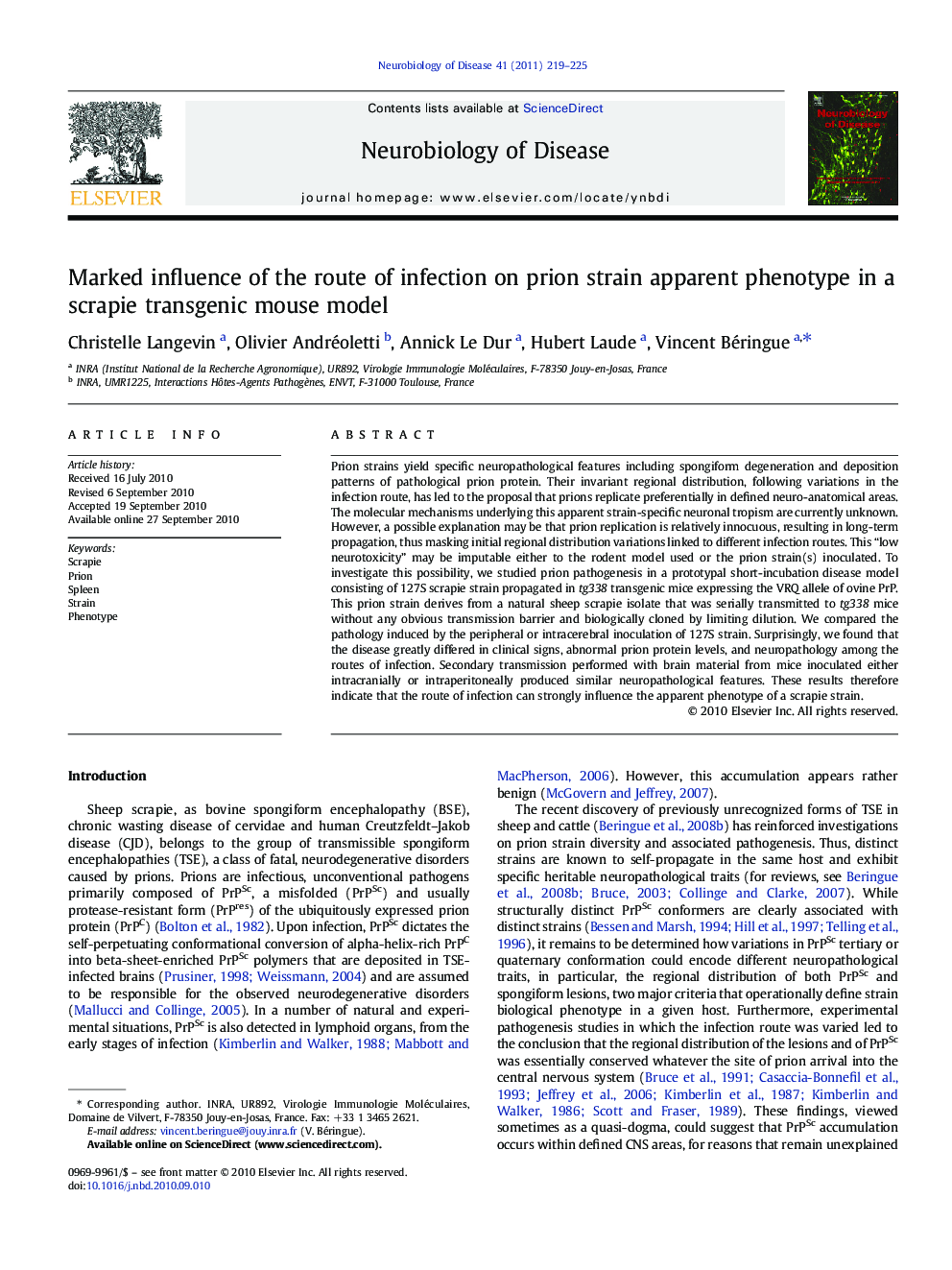| Article ID | Journal | Published Year | Pages | File Type |
|---|---|---|---|---|
| 3069703 | Neurobiology of Disease | 2011 | 7 Pages |
Prion strains yield specific neuropathological features including spongiform degeneration and deposition patterns of pathological prion protein. Their invariant regional distribution, following variations in the infection route, has led to the proposal that prions replicate preferentially in defined neuro-anatomical areas. The molecular mechanisms underlying this apparent strain-specific neuronal tropism are currently unknown. However, a possible explanation may be that prion replication is relatively innocuous, resulting in long-term propagation, thus masking initial regional distribution variations linked to different infection routes. This “low neurotoxicity” may be imputable either to the rodent model used or the prion strain(s) inoculated. To investigate this possibility, we studied prion pathogenesis in a prototypal short-incubation disease model consisting of 127S scrapie strain propagated in tg338 transgenic mice expressing the VRQ allele of ovine PrP. This prion strain derives from a natural sheep scrapie isolate that was serially transmitted to tg338 mice without any obvious transmission barrier and biologically cloned by limiting dilution. We compared the pathology induced by the peripheral or intracerebral inoculation of 127S strain. Surprisingly, we found that the disease greatly differed in clinical signs, abnormal prion protein levels, and neuropathology among the routes of infection. Secondary transmission performed with brain material from mice inoculated either intracranially or intraperitoneally produced similar neuropathological features. These results therefore indicate that the route of infection can strongly influence the apparent phenotype of a scrapie strain.
Research Highlights► Transmission properties of scrapie prions vary with the route of infection. ► Clinical signs, abnormal prion protein accumulation, and neuropathology are strongly affected. ► Intraperitoneal infection can lead to the fatal disease with limited damage to the brain. ► The spleen can accumulate more abnormal prion protein than the brain. ► The route of exposure can be a critical determinant of prion strain phenotype.
